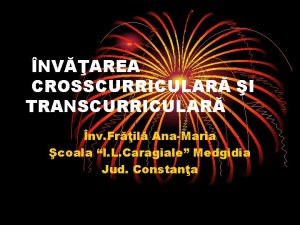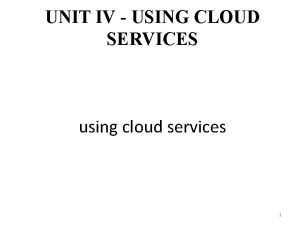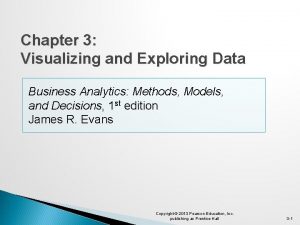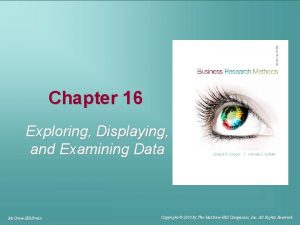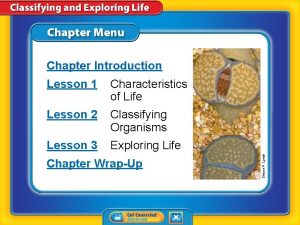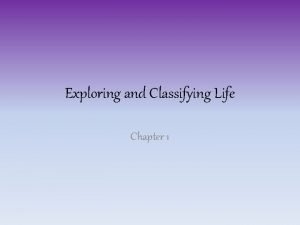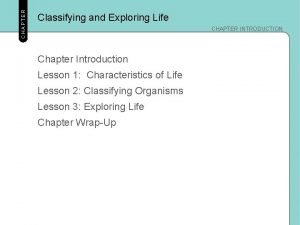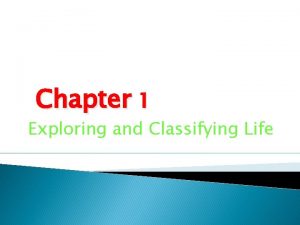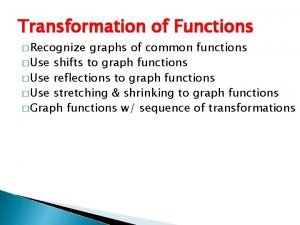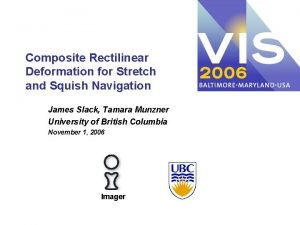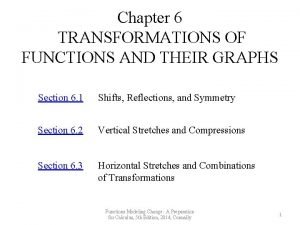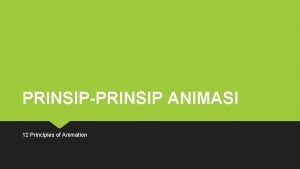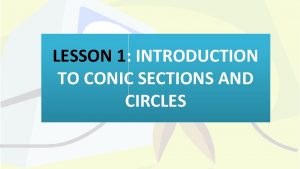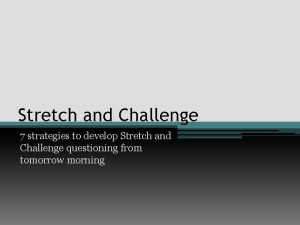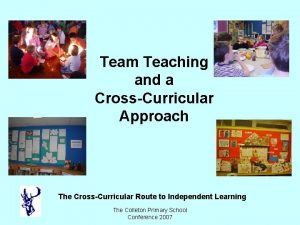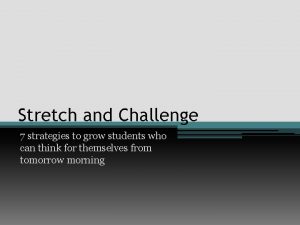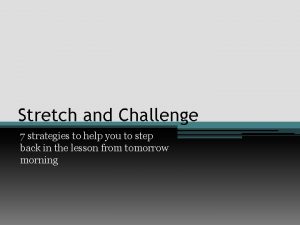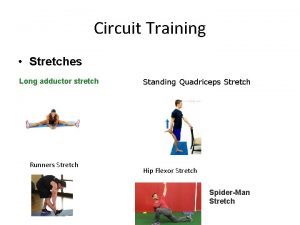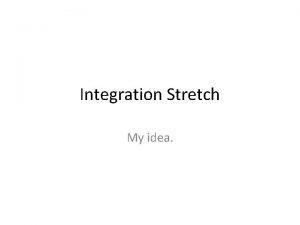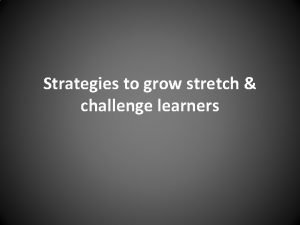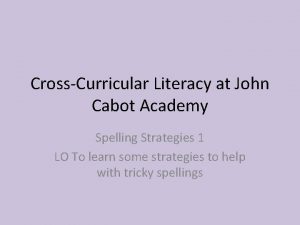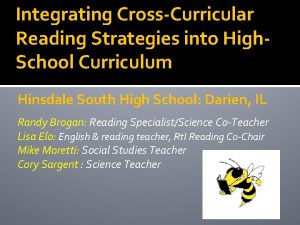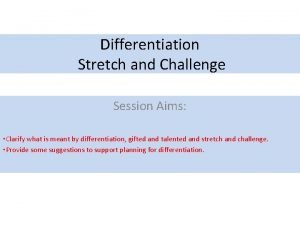Stretch Challenge Exploring crosscurricular strategies to stretch and



















- Slides: 19

Stretch & Challenge Exploring cross-curricular strategies to stretch and challenge students in their cognitive abilities. Ideas that are easy to plan, implement and embed as part of daily practice and not as a one off bolt on. You should think about how the ideas for stretch and challenge can be embedded into your practise and whether they are practical and adaptable for the context of your curriculum. This is not about a silver bullet approach, rather a systematic, research based application of tried and tested strategies that can be used to effectively challenge students. I will reference at the end of the presentation where these ideas have been taken from.

Teaching to the Top What does this mean? • From Tom Sherrington https: //teacherhead. com/2017/05/28/teaching-tothe-top-attitudes-and-strategies-for-delivering-real-challenge/ “The secret to doing this well is to think about it in three areas of teaching practice: • Attitudes: The belief and mindsets teachers need to have themselves and inculcate in their students. This influences everything else. • Routines/Habits: The things you do all the time, in every lesson. • Extra Challenges: Things you build into an overall scheme of work and use occasionally. ”

Attitudes • How does your attitude affect the chances of the class? • Do you believe every student can achieve highly? • Have you identified areas where students attitudes are affecting their outcomes? (What do they need to do to change this? ) • How do you raise the bar in terms of achievement? You determine the weather. If you believe that the students can do it, they will believe they can do it, then they will attempt meet these high expectations. Consistently setting high expectations creates an ethos of high challenge and low threat as this is the default expectation-.

Routines/Habits • What routines are in place in your class that show you expect immediate learning to take place? • Do you habitually use inter-leaving to get students to recall information from previous units and topics? • How do you question students? Do you default to a certain style and is this most beneficial to challenge? • Are there any routines that have become superfluous? • What do students expect from your lessons? To think hard or to know everything? If you are organised and consistent students will perform to the best of their ability. chaos and disorganisation will lead to

Extra Challenges • What would you class as extra challenge in your lesson? • How do students know when they should push themselves to do this? • Is extra challenge ensuring over-learning has taken place? • How do you balance extra-challenge with support? • Should extra challenge be in every lesson? • What do you think of the idea that students should be exploring in a lesson - 80% learning that has already taken place – 20% new learning or information? Is this counter-intuitive when thinking about stretch and challenge?

Subject Knowledge • Knowing the subject you are teaching inside out seems to be an obvious and a pre-requisite. For stretch and challenge having extra knowledge around the topic yourself can mean that you can offer tips, hints and advice to students so that they challenge themselves or add extra information into their responses. • An example of this would be: The English Lectures are designed to go above and beyond the curriculum and challenge students thinking to a high level.

From “Tharby and Allison” Making Every Lesson Count • We will look at some ways this model can be used to stretch and challenge students. • Keep in mind – How you would use these elements of expert teaching in your subject area and how these stretch and challenge your students?

Inter-leaving What is inter-leaving and how can it help students go ‘above and beyond’? • Inter-leaving is the deliberate planning into units of learning to space learning and leave forgetting time for students so that they can develop strategies to recall information from their long term memories. If they can’t recall the information is likely to be stored in their short-term memories only, therefore it hasn’t been learned, yet! • Starters can be targeted for this inter-leaving process. You plan low stakes quizzes or recall tasks that start the lesson and make the difficulty of the activity more complex towards the final recollection activity.

Questioning – Are there any other things we can do when questioning? This is the bread and butter of teaching. Good questioning can immeasurably improve outcomes for students. • Use no hands up regularly, by randomly selecting students from the class to answer questions we can make sure we’re in control of checking learning randomly from all students and making sure that students have understood what we’re asking. However, that it isn’t without drawbacks. we know that we have unconscious biases and may tend to end up asking the same students or opting for the safe student who we know will offer a ‘good solid answer’, but this doesn’t help if other students really don't know the answer and we give the impression that my students know what I want them to know. Much better when using this to be ruthlessly random and use my inner voice to remind myself not to opt for my safe students. • Bounce the questions from student to student with them choosing who to pick next. We have little to no control over who is asked but can use a few tricks to ensure a random gender spread or quieter students are heard. We can choose the first student and direct them to pick someone “who wouldn’t normally speak” or “who they wouldn’t normally choose” or “who is a different gender” if one gender starts to dominate the questioning and responding. We can control this by prompting and getting students to develop answers and this is a good way of gauging who is listening to each other and keeping students on their toes. • Sparingly use Hands Up. Asking students to offer the answers by randomly selecting the students who are keen to answer the question from time to time can be beneficial because we can see who is really keen to have their voice and ideas heard and we can see those that might have a tendency to sit back. However, I’d use this sparingly as the same voices tend to get heard and I want to hear from everyone in the class. • Use the register as a deep questioning opportunity on prior learning. When you read out the names on the register ask a question about something that has been previously learnt. Granted it can take a long time to do the register, but it takes little planning and means that the student have consolidated prior learning and realised what they have forgotten in some cases. • Use a range of open and closed questions depending on what we want them to know. Open questions are good for developing evaluative, inference or analysis and Closed questions are good for gauging a quick response. • Plan questioning, to make sure that we know what we want to ask, especially on a topic that we are new to. Also, make sure that we work backwards from what we want the students to know and think about how we will build up to them knowing that from the questions and prompts that we give or ask. • Probe, probe and probe some more. Don’t always move on to the next student but engage the students in a dialogue through the questions to make sure that they have extended their thinking. • Be open to diversion and deeper analytical and critical thinking remember allow to be driven by time constraints within reason. Ensure students have the opportunity to develop these critical skills. • Remember that even the most able will need scaffolding at times. Question in stages to build up to developed responses.

Live Modelling What is it and how does it stretch and challenge? • Modelling the process, thoughts and end product desired • Students can model to others when they have reached a level of expertise in an area • We can use the I – WE – YOU model to show students first, do an example together and then get students to create their own • When modelling we can use metacognition and explain the thought process and why different elements are being used – then we can go over and annotate with the strands included in the model – which explicitly shows what to include and why? This then forms the success criteria for the process • Ensure the model meets the top criteria and work backwards from the top to challenge the most able • Be explicit about where the challenge in the example is

Live Feedback What is it and how can it help? • Deliberately, reading and commenting on work as it is being done. This seems obvious and is something embedded into our practise already, however we can up the ante for challenge. • Speaking to the student and giving them specific tips to add to what they are doing • Commenting on work as it is done • Using the visualiser to flash up excellence • Identify and re-teach elements that are commonly missing

Multiple Choice Questions that get harder How can these help stretch and challenge? • Checks understanding • We need to ensure that the choices are plausible and create “desirable difficulty” for the students in responding to these • Means that we can cover learning and go over difficult concepts many times • As they get progressively more difficult this offers the opportunity to stretch

Metacognition – Handout with more detail What is it and how can it help stretch and challenge students? • Metacognition is defined as “higher-order thinking that enables understanding, analysis, and control of one’s cognitive processes, especially when engaged in learning. ” - Metacognition is unpicking the process with the students of what they are doing and why they are doing it. • We already use metacognition in our teaching and learning all of the time. The handout gives some suggestions of metacognitive activities that can be transferred across the curriculum.

Going Blind What is this and why does it help? • Deliberately, don’t read a text or exam question before a lesson and then unpick it with the students – this gives you a ‘live’ feel and understanding of the misconceptions that students will have. • This also allows you to co-construct the answer and come up with an answer that shows you too have had to think hard about. • You can explicitly model the “novice” thinking process as you are reading through and discussing the work/task.

Writing at the same time as a class How does this help with stretch and challenge? • Students enjoy the challenge element • Offers a competitive element for some most able students as they want to see if they can write ‘like a professional’ • Gives an example to compare against • Students are motivated to continue writing, especially if you sit next to a student who is able but a reluctant writer • Using the visualiser while doing this to begin can motivate them with the vocabulary used in your response

Using a visualiser How does this help with stretch and challenge? • You can quickly flash an excellent example up on the board to show what students are capable off. • You can use it to explore misconceptions with students work and adapt/change • Model expectations for extension work/standard of work • Model self and peer assessment / model DIRT work ongoing in the lesson

The problem with challenge demarcation • Problem - All – Most – Some / Must- should - could – are problematic terms for stretch and challenge, because there is an automatic assumption that you expect SOME students not to be able to do the most difficult part of the task. • Solution - Remove this demarcation on tasks. Continue to offer steps for students to achieve but keep this invisible for the learners. • Problem – Signposting Challenge Task on the board/Power. Point – Think carefully, is the task really challenging or is it a signpost for an observer? • Solution – Could you write Extension task instead which makes sure the task has been considered in terms of increased cognitive load for the students, rather than the potential to signpost a ‘normal’ and ‘accessible’ task as challenging.

Further Reading & work that has shaped this presentation • https: //teacherhead. com/2017/05/28/teaching-to-the-top-attitudes-andstrategies-for-delivering-real-challenge/ • https: //paulgmoss. wordpress. com/2019/02/02/modelling-the-4 thdimension/ • https: //thestableoyster. wordpress. com/2018/09/15/teaching-nothing-new/ • https: //susansenglish. wordpress. com/2017/10/15/why-i-love-live-modellingfor-across-the-curriculum • http: //www. slowteaching. co. uk/2017/09/29/ten-questioning-strategies/

Inspired by and information taken from: • Jamie Thom – Slow Teaching • Tom Sherrington’s blogs – Author of The Learning Rainforest • Paul Moss – Blogger & English Teacher • Sarah Barker – Blogger & SLT • Chris Moyse – SLT, Blogger and Education Consultant • Andy Tharby and Sean Allison – Making every lesson count
 Crosscurricular
Crosscurricular What is stretch and challenge
What is stretch and challenge Welcome to teen challenge uk - teen challenge uk
Welcome to teen challenge uk - teen challenge uk Exploring online planning and task management
Exploring online planning and task management Visualizing and exploring data in business analytics
Visualizing and exploring data in business analytics Data preparing exploring examining and displaying
Data preparing exploring examining and displaying Exploring the world of business and economics
Exploring the world of business and economics Classifying and exploring life lesson 1 answer key
Classifying and exploring life lesson 1 answer key Classifying and exploring life lesson 2 answers
Classifying and exploring life lesson 2 answers Classifying and exploring life
Classifying and exploring life Exploring and classifying life
Exploring and classifying life Transformation linear function
Transformation linear function Graph stretch and shrink
Graph stretch and shrink Stretch and squish navigation
Stretch and squish navigation Compress and stretch graph
Compress and stretch graph Drop and stretch aprv
Drop and stretch aprv Gambar solid drawing
Gambar solid drawing Opportunities and challenge
Opportunities and challenge Why did europeans begin exploring
Why did europeans begin exploring Lesson 1 exploring conic sections
Lesson 1 exploring conic sections
